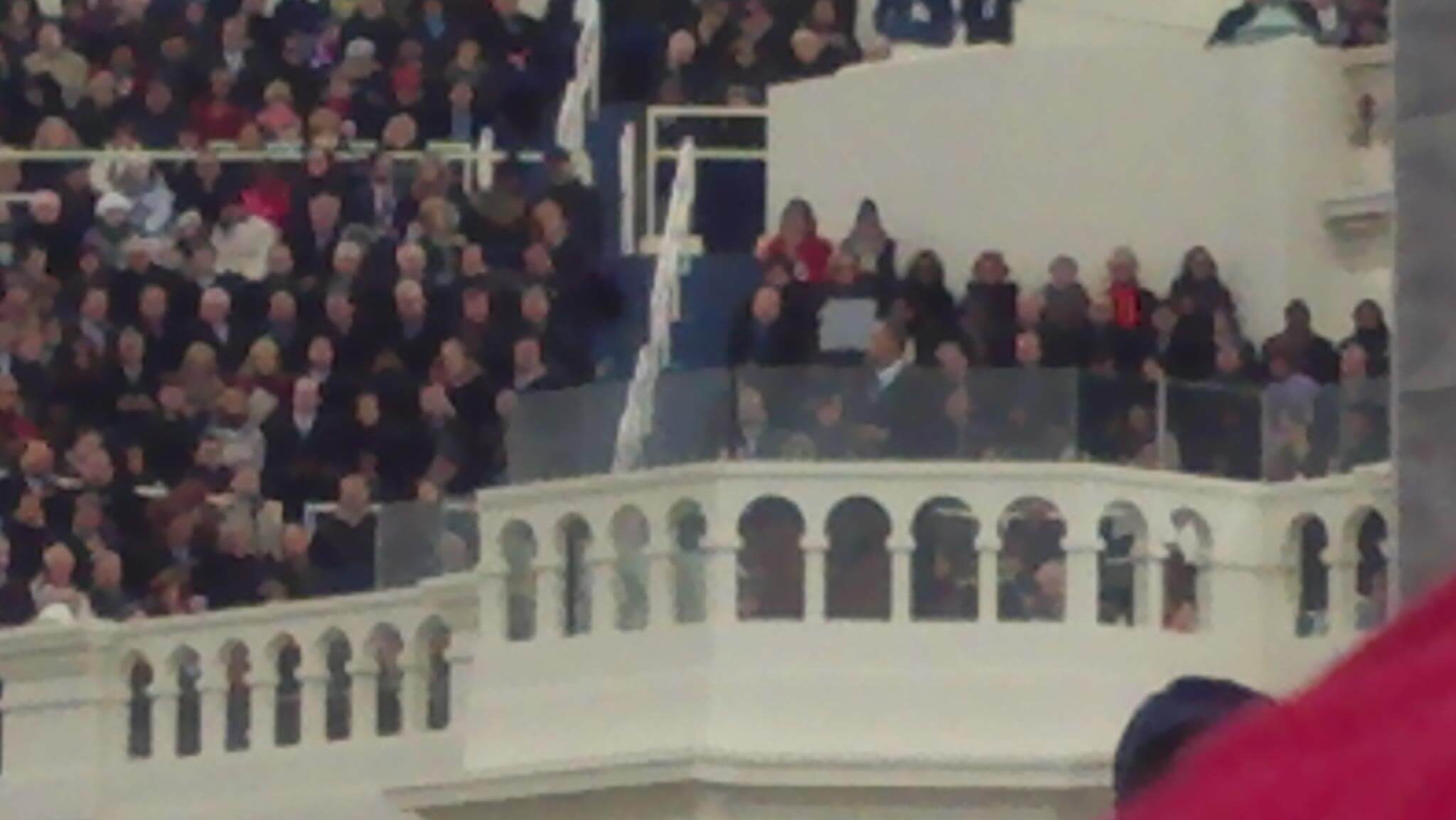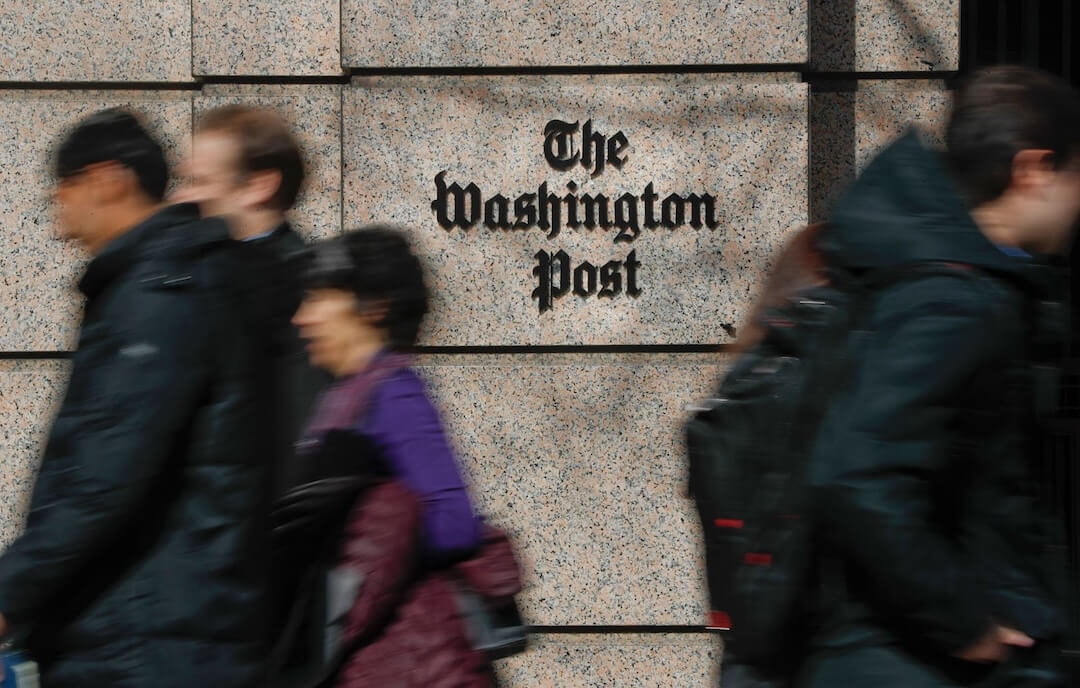This piece originally appeared in Local Edition, our newsletter following the digital transformation of local news. Want to be part of the conversation? You can sign up here.
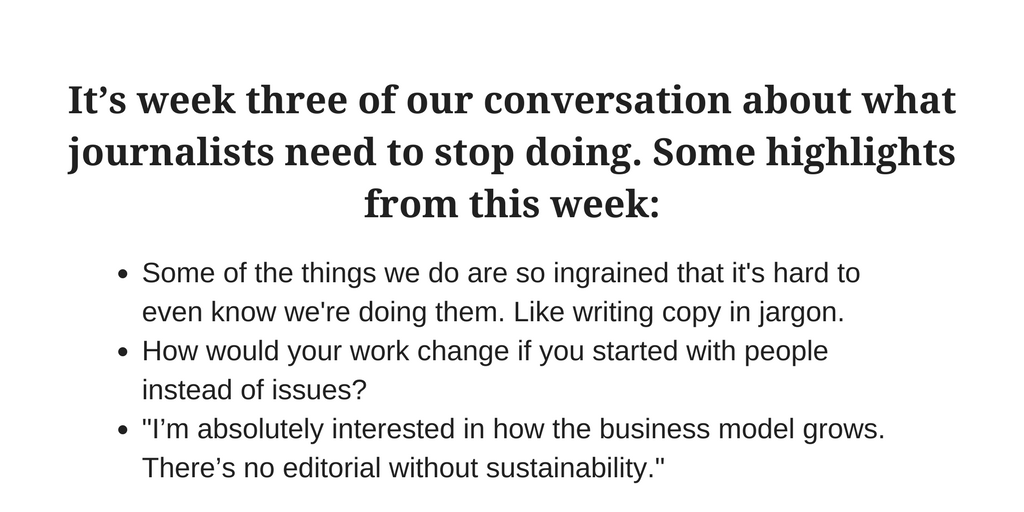
Where do you start when beginning something new?
Here’s a better question: How do you start when beginning something new?
Last year, Mónica Guzmán and Anika Anand started by talking to people around Seattle.
“And we talked to them not about what kind of news they like to read or what kind of beats they like to follow,” Mónica said, “we talked to them about how they relate to the place where they live, how they find meaning here.”
“Those are the questions we asked,” she said, “and out of their answers, we created The Evergrey.”
The Evergrey, a local media project aimed at helping Seattle residents get the most out of their city, started at the end of October as a newsletter.
As they were researching the project, some traditional journalists had questions for the pair, too.
Would they cover city hall?
How would they approach the transportation beat?
“You know, here’s this list of things you’re just supposed to do in local media. But why? Do we feel justified? Do we know that that’s what people want and need? And how can we ever know unless we talk to people?”
Mónica’s a good addition to this conversation about the stuff we have to stop doing because, from the start of her career, she has rarely done the conventional thing. Our discussion below has been edited for length and clarity.
Next week, I’ll be adding one more voice to the conversation before we wrap all this unlearning up and dig deeper into some of the things we’ve discovered. I’ll tell you more before we’re done here.
But first, meet Mónica.
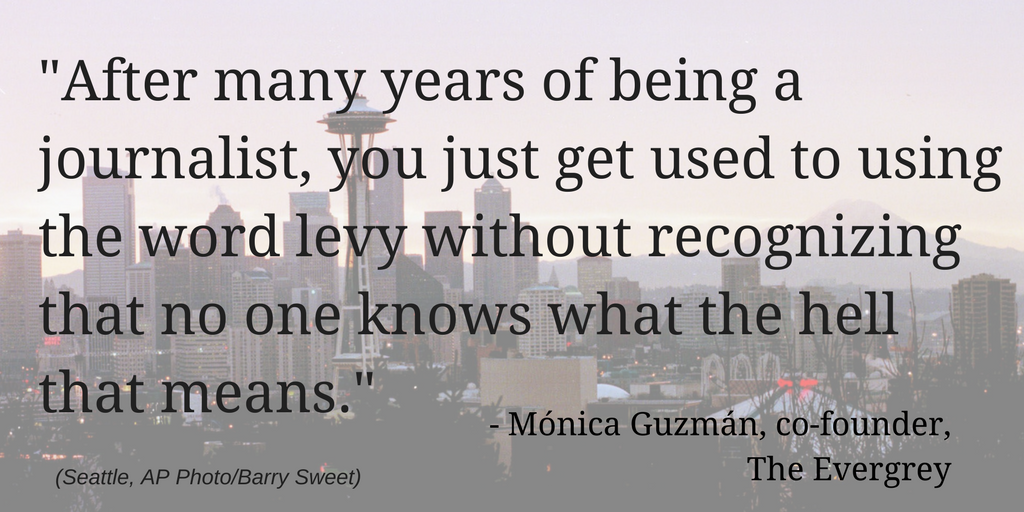
I thought you’d be a good boss for the conversation we’re having right now about unlearning. I think you’ve done a lot of that in your career already. Can you tell us about yourself?
I’m the co-founder and the editor of The Evergrey, which is a digital publication in Seattle that’s all local. It aims to make people connect to the city and feel powerful here. Its main product is an email newsletter that goes out five days a week at 7:30 in the morning.
It’s six months old this week. It launched in October of 2016. I started working on it in August of 2016 with my co-founder, Anika Anand.
Before that I was a fellow at the Nieman Foundation for Journalism at Harvard, which was awesome. That gave me an opportunity to step back from my career and think about where I want to go and what I want to do, and the answer was very entrepreneurial, thus The Evergrey.
Before that, I was a freelance journalist. I did a weekly Sunday column in The Seattle Times for a couple of years about technology. I did a weekly column in GeekWire for, I want to say, about four years.
Before that, I was at Seattlepi.com, which grew out of the Seattle Post-Intelligencer. It was at the Seattle P.I. that I really got into journalism very deeply, it was there that I started something called the Big Blog.
I got into social media when it wasn’t the obvious thing to do and ended up getting a head start, I suppose, on how to connect more closely with people and frankly get past the conventions and back to the purpose of journalism.
When we follow that thread all the way back, you started from legacy traditions. Were there any things you personally had to do to start pushing boundaries? Or is that just the nature of your personality?
Probably a mix of both. The part of my personality that has served me well in the last 10 years is the part of my personality that likes to be open and really enjoys conversations with people.
So, it made it natural for me to experiment with Facebook and Twitter and in some ways to blend my personal identity and my work identity, which is not for everybody, but certainly made it easier for me to relate to people in ways that other journalists didn’t necessarily find natural.
That opened a lot of doors to engagement, that big buzzword of the day.
I remember in the beginning, I was hearing from a lot of my colleagues, “never read the comments.” “Don’t read the comments.” Because I would cry. I was very young, and if I read a bad comment in one of my columns, I would just freak out. It was awful.
And they were like, “why are you subjecting yourself to that? There are toxic people out there, there are bad people out there, you don’t need to be reading them.”
And that just didn’t sit well with me.
So I had to build a little bit of that thick skin – it isn’t really thick skin, it’s more like telling the difference between serious criticism that you should take seriously and someone just being a jerk. And you need a level of confidence and you need time to get there.
It was a mix of that and actually saying no to the idea that we are journalists and we know best.
The Evergrey seems like a pretty convention-breaking thing, too. Can you tell us about how it works and how it’s different than what you’ve done before?
Yeah, so the most cosmetic thing that’s different is that it’s a newsletter. You’re familiar with those. It’s just a very – I don’t know if ironic is the correct term – but it’s very interesting that a technology as old as email has ended up feeling like one of the most direct connections to people you can make.
With Twitter, with Facebook, with websites, you rely on big companies to decide whether or not your followers are going to see your content. And that’s, you know, the world. That’s what it is.
But when you get somebody to subscribe and you get in their inbox, that’s between you, them and a spam filter. That’s it. It’s nice. It’s a great, great personal connection.
The format of it is, and this actually comes from reader feedback, she said: “You know, your newsletter doesn’t read like a newsletter. It kind of reads like an email from a friend.”
She kind of said it in this bad way. But then later, she actually emailed us back and said, “you know what, I actually like that it reads like an email from a friend. That’s good.”
So there’s a convention-break right there. That reader expected a certain kind of newsletter. She expected a bunch of links, she expected scattered, staccato stuff, and what she got was something that starts with “Good morning, it’s Monday,” and ends with “have an awesome day, we’ll see you tomorrow.”
In the middle, it’s a narrative. We think of it as your smart friend in the city who’s telling you what’s up. That’s The Evergrey.
What’s cool about that format is we decided to go ahead and break some other conventions in journalism. A smart friend that you like is not going to tell you a bunch of jargon. So it makes it really easy to spot the jargon, and it’s jargon that, in previous jobs, I never saw as jargon.
After many years of being a journalist, you just get used to using the word ‘levy’ without recognizing that no one knows what the hell that means. It’s a tax! It’s a tax. There’s just a bunch of words that are for the wonks out there. I feel like they make people feel that they’re already behind on the first sentence of your article, like they should feel guilty for what they don’t know.
And it’s really important to us that The Evergrey has this welcoming tone and this friendliness, and we can’t have people feel guilty for what they don’t know.
Another minor convention we break is AP style says on second reference you should use the last name, and we use the first name. So that’s fun.
When freelancers submit articles, that’s one correction I always make. Like, nope, we can call her Mary. She’s one of us. She’s somebody in Seattle. She’s a Seattleite. She’s Mary.
These are some pretty old-school journalism things.
Yeah, I guess some of them are. Some of them are just basic style things that there’s not a whole lot of reason to question, and I’m finding reasons to question them.
You’re working with a different business model, too right? Tell us about that.
The business model is largely based on sponsored projects and creative campaigns. That’s the WhereBy.Us business model, that’s what we’re bringing to Seattle and The Evergrey. That’s the business model that exists already in The New Tropic.
There’s several revenue streams, the big ones are these creative projects. WhereBy.Us has a creative studio, and they work with clients who want to reach local markets and local audiences. The sponsored projects, those are the things that journalists do write. We think of it as underwritten work.
In Miami, Lyft sponsored neighborhood guides, which are really, really good. Why did Lyft sponsor them? Because Lyft is a brand that wanted to affiliate themselves with that sense of exploration of a city.
Their business interests align with New Tropic’s interests to help people connect to their city, and voila! You get somebody making something possible.
There’s also promotional placements in our newsletter that are paid.
There’s ticket revenue at our events, and there’s a membership model. We have all kinds of awesome members at The Evergrey, New Tropic has members, too, and those are $60 a year, I believe, in both markets.
That’s our business model. It’s not display ads.
It seems like you have to think differently about the business/edit divide than most journalists. Is that right? How have you done that?
My cofounder and I decided to split our roles once we had spent enough time building the vision together and working on the product together so that it reflected both our visions. She is now the lead on business development and I’m the lead on editorial.
But we, by no means, have stopped talking to each other. At all. When you’re a small company and you’re building community, you don’t want to put up too many walls. You want to put up the right walls.
But probably more importantly, we’re really transparent. Really, really clear about what things are. We have language on our site, we have told our newsletter readers, as clear as possible: Here’s our business model. Here’s how it works. Here’s when creative gets involved and journalists step out. Here’s where journalists do play a role.
As the co-founder of The Evergrey, I’m absolutely interested in how the business model grows. There’s not editorial without sustainability. I do not lock myself out of those conversations. Those conversations are very important.
In the last few weeks, we’ve put the things that need unlearning into three buckets: culture, audience and practice. Are we forgetting anything?
Collaboration, I don’t think, is a separate thing, but I do think it’s super important. The convention in journalism is to compete like a mofo. Does that serve the reader? Maybe. It serves the reader if you’re creating better work because of it, but if you’re still replicating work that you could do better together, I don’t know.
I don’t think anyone mentioned collaboration specifically, so that’s great. I know you’ve lived a lot of your career publicly. What’s something that people don’t know about you?
Like, anything?
Anything.
I really love karaoke. I really love to sing.
Nice. Do you have a go-to song?
I really like Alanis Morissette’s “You Oughta Know.” I whip that out when I feel a little grungy. I actually won a karaoke competition with that. I really, really, really love to sing.
What are a few things you’d like to see journalists stop doing?
Oh, that’s a good one. I think the world would be a better place if we stopped beginning the process with issues and actually put the center of gravity in everything we do with people.
It would be great if more journalism organizations stepped back from the conventional way of thinking about what the beats are and what the issues are and tried to make really lasting, strong, incredible connections with their community so they are always in the know and never out of touch.
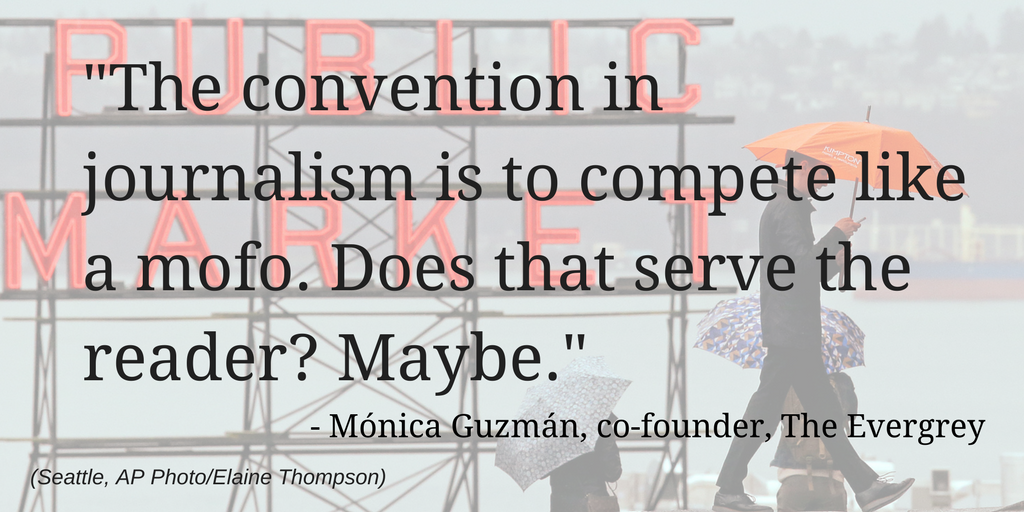
Thank you, Mónica!
OK, so next week, I’m trying something new here. I love the conversations we’re having with journalists and bosses around the country. But I went to a conference examining digital disruption last month in Kiev, and I learned more from the non-journalists in the group than I did from the journalists.
So next week we’ll talk with Justin Aglio, an innovative educator who’s pushing the boundaries in his field. We’ll find out what’s working, what’s not and pick up a few tips from him.
Until then, check out the Future of Local News conference next week in New York. Democracy Fund, meanwhile, has published a deep-dive into newsroom engagement. Also this week, you can find out what my colleagues learned on their tour last year of innovative newsrooms.
See you next week!
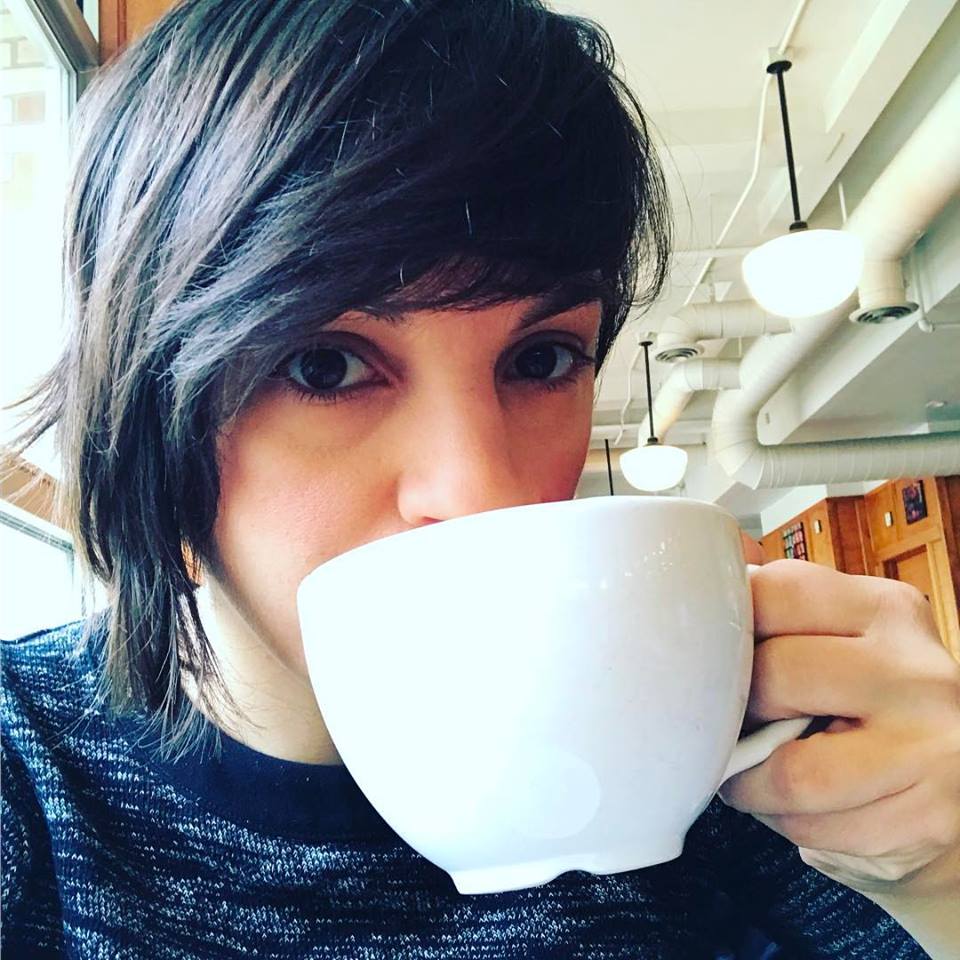
Mónica Guzmán has the most Seattle pic ever. (Photo courtesy Mónica Guzmán)



